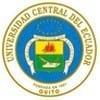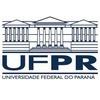Check out what is new in Poultry Industry
Find the best technical articles, forums, and videos on Poultry Industry at Engormix. Enter now and interact with the world's largest agricultural social network.
What is litter? Litter and its management are an essential part of bird management and ensuring bird welfare. This goes for broilers, turkeys, or laying hens kept on litter floors. Litter is a combination of the bedding used within a house combined with the excreta from the birds. Good quality litter provides...
Comments : 0
Recommendations: 0
Animal welfare audits are performed to evaluate whether a hatchery, farm, or processing plant is meeting the specific animal welfare standards of a certification program. These programs may be internal to a certain company, or they could be a requirement for animal welfare certification. These certification programs...
Comments : 0
Recommendations: 1
.jpg&w=3840&q=75)
Discover how ABTL communicates its dedication to innovation and differentiation in Southeast Asia, as Managing Director Mr. O. P. Singh explained.
...
Comments : 0
Recommendations: 1
INTRODUCTION Non-typhoidal Salmonella (NTS) enterica subsp. enterica is a foodborne pathogen that causes »1.2 million infections in the United States of America (USA) annually (Scallan et al., 2011), and was responsible for more than 95 million cases of diarrheal disease and 50,771 deaths worldwide in 2017 (Stanaway et al., 2019). Human infections are usually mild and manifest as a self-limiting gastroenteritis. However, high-risk populations such as the infants, the elderly,...
Comments : 0
Recommendations: 0


New nutritional solution in heat stress management. <i>Ganoderma lucidum</i>: An ally to fight heat stress
Suggested link
Nontyphoidal Salmonella (NTS) represents one of the leading causes of foodborne gastroenteritis worldwide (1, 2). The global burden of NTS infections is 93.8 million cases, and it is estimated that NTS causes around 155,000 deaths annually (3). Unfortunately, there is a lack of information about surveillance studies of NTS in Latin American countries, and reports on NTS outbreaks are scarce in this region (4). In South American countries, there has been an increase in reports of...
Comments : 0
Recommendations: 0
.jpg&w=3840&q=75)
José Henrique Stringhini (Federal University of Goiás) comments on the advantages of butyric acid compared to other additives and offers practical recommendations for its use in water or feed, during this Engormix interview....
Comments : 2
Recommendations: 3
Probiotics are included in the feed and administered continuously during the entire production cycle to maintain intestinal integrity and strengthen the immunity of the bird, thus reducing the need for repeated medication. Alternatively, water-soluble probiotics are often applied to quickly react to upcoming stress situations in the flock – but they can negatively impact the formation of biofilm in the water lines. For this reason, formulations that reduce the formation of biofilms...
Comments : 0
Recommendations: 2
.jpg&w=3840&q=75)
John Boney (Penn State University) comments on nutrient segregation, feed quality, pellet degradation, and on-farm feed sampling methods, in this Engormix interview....
Comments : 7
Recommendations: 3
.jpg&w=3840&q=75)

Travis Schaal talks about the importance of biosecurity to prevent avian influenza outbreaks
Suggested link
1. Introduction Recently, the interest in “green food products” based on natural compounds and minimal processing of edible products [1,2] has gained attention in determining products’ acceptance [3]. These characteristics are crucial factors that reflect the current trends and economic growth in this sector [4], which is estimated to exceed USD 13 billion by 2024, according to reports from Global Market Insights, Inc. (Selbyville, DE, USA) [5]. From this point...
Comments : 0
Recommendations: 0
1 Introduction The emergence of multi-resistant bacteria (MDR) to antibiotics represents one of the principal global threats to public health (Murray et al., 2022). The clinicians have been considered the use of the last therapeutics options, such as vancomycin, polymyxin B, carbapenems and colistin, with low rates of success (Wang et al., 2022; Yao et al., 2023). The infections by MDR are currently associated with considerable increase in morbidity and mortality of intensive...
Comments : 0
Recommendations: 1
1. Introduction Antimicrobial resistance (AMR) is one of the main global threats today, and recent reports estimate that it directly caused 1.27 million deaths in 2019 [1]. In Brazil, the National Health Surveillance Agency, through the Evaluation of National Indicators of Health Care-Related Infections (HAIs) and Microbial Resistance (MR), in the year 2021, estimated that Escherichia coli resistance to different classes of beta-lactams can reach rates of 47.5% to cephalosporins,...
Comments : 0
Recommendations: 1
INTRODUCTION Campylobacter jejuni (CJ) is a Gram-negative commensal pathogen prevalent in the intestinal tract of chickens and other animals. Human infection is characterized by inflammatory bowel response, followed by bloody diarrhea and painful symptoms to the affected people and pets. In addition, Guillain-Barre syndrome can be a secondary sequelae, characterized by a potential fatal autoimmune disorder in humans (Crofts et al., 2018). Moreover, CJ multidrug resistance to...
Comments : 0
Recommendations: 0


The Role of Amino Acids in the Immune System – A special focus on broilers.
Suggested link
1. Introduction In intensive broiler production, the objective is to obtain high-performance productivity at a low cost. To accomplish production goals and satisfy the increased demand for poultry meat worldwide, intense genetic selection, health, management, and nutrition programs have emerged (Peralta et al., 2016). As a major development priority for nutrition, researchers are looking for natural additives to replace antibiotic growth promoters (AGPs). The AGPs were banned since...
Comments : 0
Recommendations: 1
INTRODUCTION Aflatoxin Testing in Changing Times: The Context at a Glance As toxic contaminants of very high concern, aflatoxins stand out as a key area of focus in today’s food safety testing arena. The issues surrounding the rising importance of accurate, defensible aflatoxin test results are numerous and complex. Chief among them are a growing public awareness of the health and economic implications of foodborne toxins, the increasing globalization of the...
Comments : 0
Recommendations: 0
1. Introduction Campylobacter is a virulent Gram-negative bacterial genus mainly found in the intestines of poultry [1], dogs, and cats [2]. These pathogens can cause bloody diarrhea, abdominal cramps, nausea, and vomiting. In more complex cases, they can cause Guillain–Barré syndrome and death [3]. Since its first recognition, several pathogenic species of Campylobacter that cause human campylobacteriosis have been cataloged using phylogenetic tools...
Comments : 0
Recommendations: 2
.jpg&w=3840&q=75)
Join Carlton Skipper, SE Sales Representative, as he introduces Fumo-V™ ONE, the groundbreaking solution for measuring fumonisin levels in complete feed and pet food formulations. ...
Comments : 0
Recommendations: 0
1. Introduction Marek’s disease virus (MDV) is an oncogenic and highly contagious alpha herpesvirus in chickens [1]. This virus is considered a major global challenge in the poultry industry and is estimated to cause annual losses of approximately USD 1–2 billion [2]. Protective vaccines against Marek’s disease (MD) have been widely used since 1969 [3]. Due to the evolution of viral strains selecting for higher virulence, the need to develop vaccines with...
Comments : 0
Recommendations: 0
1 Introduction Brazil’s food production is among the largest in the world. Poultry production ranks first globally among all the animal species used for food production. Brazil is one of the world’s leading chicken producers and exporters, while the state of Parana is the largest chicken meat producer and exporter in Brazil, representing more than 40% of Brazilian exports. The Brazilian Animal Protein Association (ABPA) reported that Brazilian chicken meat exports,...
Comments : 0
Recommendations: 0

Mr. Sumit Sipany, Assistant Manager - Marketing at ABTL, elaborates on how these elements are vital for success in the animal health and nutrition sector....
Comments : 0
Recommendations: 2
INTRODUCTION The initial stage of a laying hen's life is crucial for its development. During this period, optimal nutrition is essential for ensuring strong performance and high egg quality throughout the hen's productive lifespan (Rentsch et al., 2023). During this phase, young laying hens undergo significant physiological changes, including the development of reproductive organs and the initiation of egg production. Adequate nutrition during this period is crucial for...
Comments : 0
Recommendations: 1






























